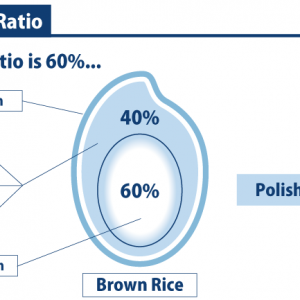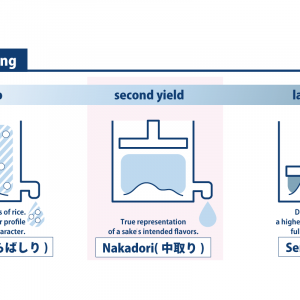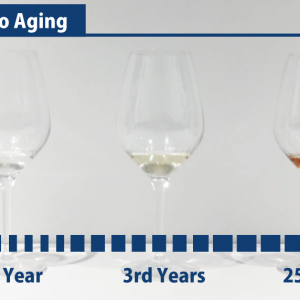
Muroka (noun)
[moo-roka]
Japanese characters: 無 (無: nothing; 濾過: filtering)
1. What is muroka sake?
Muroka sake is often referred to as ”unfiltered sake,” and accounts for a decidedly small percentage of all sake produced. The lack of filtration gives muroka sake a unique straw-colored hue, and often a bolder, some might say “rougher,” flavor profile than more standard (filtered) sake varieties.
2. Pressing vs Filtering
While muroka’s flavor profile may be bold and straightforward, what defines an “unfiltered” sake is considerably more complicated. One might argue that the process of harvesting sake from moromi is technically a filtration process in and of itself, and as such, even muroka is not without some refining. In fact, Japanese law stipulates that all true sake must be filtered, making the muroka nomenclature a legal conundrum. To add to the stickiness, murky nigori sake are often translated as “unfiltered” or “coarsely filtered” sake despite looking and tasting nothing like clear muroka — although all nigori is also muroka by default. Is your head spinning yet?
This is a tricky subject that still lacks an absolute or legal definition, with most breweries operating on loosely agreed-upon consensus.
To avoid the aforementioned confusion, the process of squeezing sake out of moromi is called “pressing” in sake-speak. While pressing separates the liquid from the leftover rice solids, or kasu, the cotton mesh will do little to tamper with the color or flavor of sake. On the other hand, filtration serves to rid the sake of any impurities that could cause off-flavors or aromas in the course of maturation, and also lightens the sake’s color. A rather new technology that dates back about 60 years, filtration is commonly accomplished by adding a dose of powdered active charcoal into the pressed sake and then running it through a mechanical filtration system. The result is a more elegant and stabilized product, that’s also visibly more transparent.
3. Not better or worse
With that said, why do some breweries go the extra mile to decolor their sake from its natural golden hue? For some, it’s part of engineering a particular flavor profile in their sake; while for others it’s a means to protect their sake from unwanted misperception. Sake that’s been exposed to too much sunlight can develop a similar yellowish tinge, potentially causing consumers to confuse a muroka with plain old mismanaged sake, so some brewers opt to preemptively manipulate the muroka’s color.
While the untainted muroka sake may feel purer, it doesn’t necessarily promise better sake — it’s simply a different style. It’s also worthwhile to reiterate that not all muroka sake is full-bodied and golden. Some muroka can be surprisingly delicate and elegant in its flavor profile, making it virtually indistinguishable from its filtered counterpart.
Learn More>>Muroka: Easy-to-Understand Interpretation of Jargon – Muroka Nama Genshu?
Free Sake Infographics:Feel free to download and use them freely from here to help you learn more about sake!





Comments